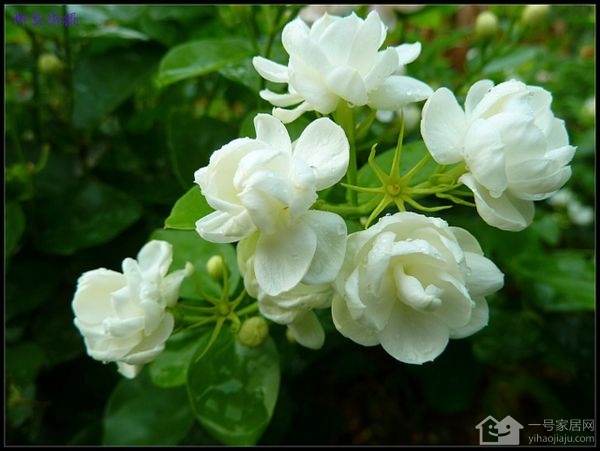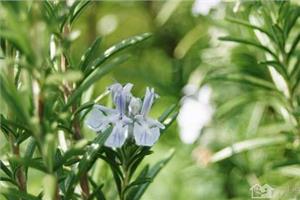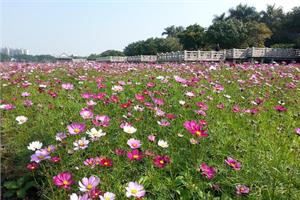There are five key points to pay attention to in cultivating jasmine.
Jasmine is a general term for evergreen shrubs or vines of Melilotus family. Many flower friends are cultivating jasmine flowers, but many flower friends are not very clear about the cultivation methods of jasmine flowers. Below we will talk about the cultivation methods of jasmine flowers.

1. Jasmine growing environment
Jasmine flowers like warm, humid and sunny environments, and grow best in well-ventilated, semi-shady environments. The soil with a lot of humus slightly acidic sandy soil for the most suitable. Most varieties are afraid of cold, drought, frost, waterlogging and alkaline soil. When the winter temperature is lower than 3℃, the branches and leaves are prone to freezing injury, and if it lasts for a long time, they will die.
2. Jasmine planting method
1. Moisture: Jasmine is not drought-tolerant, but it is forbidden to accumulate water. In rainy seasons, it is necessary to dump the accumulated water in the basin in time, otherwise the leaves are easy to yellow. Summer hot sunny days to water twice a day, morning and evening once, such as found that the leaves should be sprayed on the leaves, promote growth.
2, soil: cultivation jasmine soil to fertile sandy and semi-sandy soil is good, in the pH value of 6 to 6.5 slightly acidic soil planting, then the roots dense, vigorous growth, such as heavy soil viscosity, lack of matrix, fertility is low, poor ventilation, then the roots are less, the plant is short, the stems and leaves are slender, and the flowers are few and small.
3. Fertilization: The high temperature season in midsummer is the peak period for jasmine growth. Apply more organic fertilizer and phosphorus and potassium fertilizer, such as peanut cake powder, bone meal, calcium superphosphate and multi-element flower fertilizer, twice a month. Jasmine often appears luxuriant branches and leaves but does not bloom in summer growth period, the main reason is that too much nitrogen fertilizer is applied, resulting in excessive growth of branches and leaves. In such cases, fertilizer and water should be controlled, phosphorus and potassium fertilizer should be applied, and flower buds should be bred. At the same time, attention should be paid to light: Move jasmine to a place with sufficient sunshine and good ventilation. Jasmine likes hot, humid, ventilated environment and needs sufficient light. Jasmine is afraid of cold. Potted jasmine in the south can be cultivated outdoors for wintering. In the north, warm work should be done in autumn and winter. Move indoors and put it in the south direction. Light is strong branches, leaves green, flowers and fragrance, lack of sunlight is sparse flowers and less fragrance.
4. Fertilizer and water: The high temperature season in midsummer is the peak period for jasmine growth. Apply more organic fertilizer and phosphorus and potassium fertilizer, such as peanut cake powder, bone meal, calcium superphosphate and multi-element flower fertilizer, twice a month. Jasmine often appears luxuriant branches and leaves but does not bloom in summer growth period, the main reason is that too much nitrogen fertilizer is applied, resulting in excessive growth of branches and leaves. In such cases, fertilizer and water should be controlled, phosphorus and potassium fertilizer should be applied, so as to promote bud breeding. At the same time, attention should be paid to moving jasmine to a place with sufficient sunshine and good ventilation.
5, pruning: flower proverb said: "jasmine is not pruned, branches weak flowers are very obvious","pruning to be ruthless, flowering is stable", but people cultivate jasmine, often pay attention to fertilizer and neglect pruning, even after winter branches are reluctant to cut, so that branches are thin and weak, leaves are small, plant type is not elegant, flowers are not full. Jasmine pruning, in addition to spring after the winter will be thin branches cut off, leaving only strong base to wait for new bud germination, summer pruning is very important. After flowering, the branches should be left in time for 3--5 sections, and the top shoots should be cut off to promote the germination of new Asia. Make sure the flowers bloom.
The above is the relevant introduction of this article, I believe you have read this also have a simple understanding, if necessary, you can continue to pay attention to No. 1 home network, to learn more information.
Related
- Wuhan Hospital Iron Tree Blooming Result Was Instantly Frightened by the Gardener Master
- Which variety of camellia is the most fragrant and best? Which one do you like best?
- What is the small blue coat, the breeding methods and matters needing attention of the succulent plant
- Dormancy time and maintenance management of succulent plants during dormancy
- Minas succulent how to raise, Minas succulent plant pictures
- What are the varieties of winter succulent plants
- How to raise succulent plants in twelve rolls? let's take a look at some experience of breeding twelve rolls.
- Attention should be paid to water control for succulent plants during dormant period (winter and summer)
- Watering experience of twelve rolls of succulent plants
- Techniques for fertilizing succulent plants. An article will let you know how to fertilize succulent plants.



